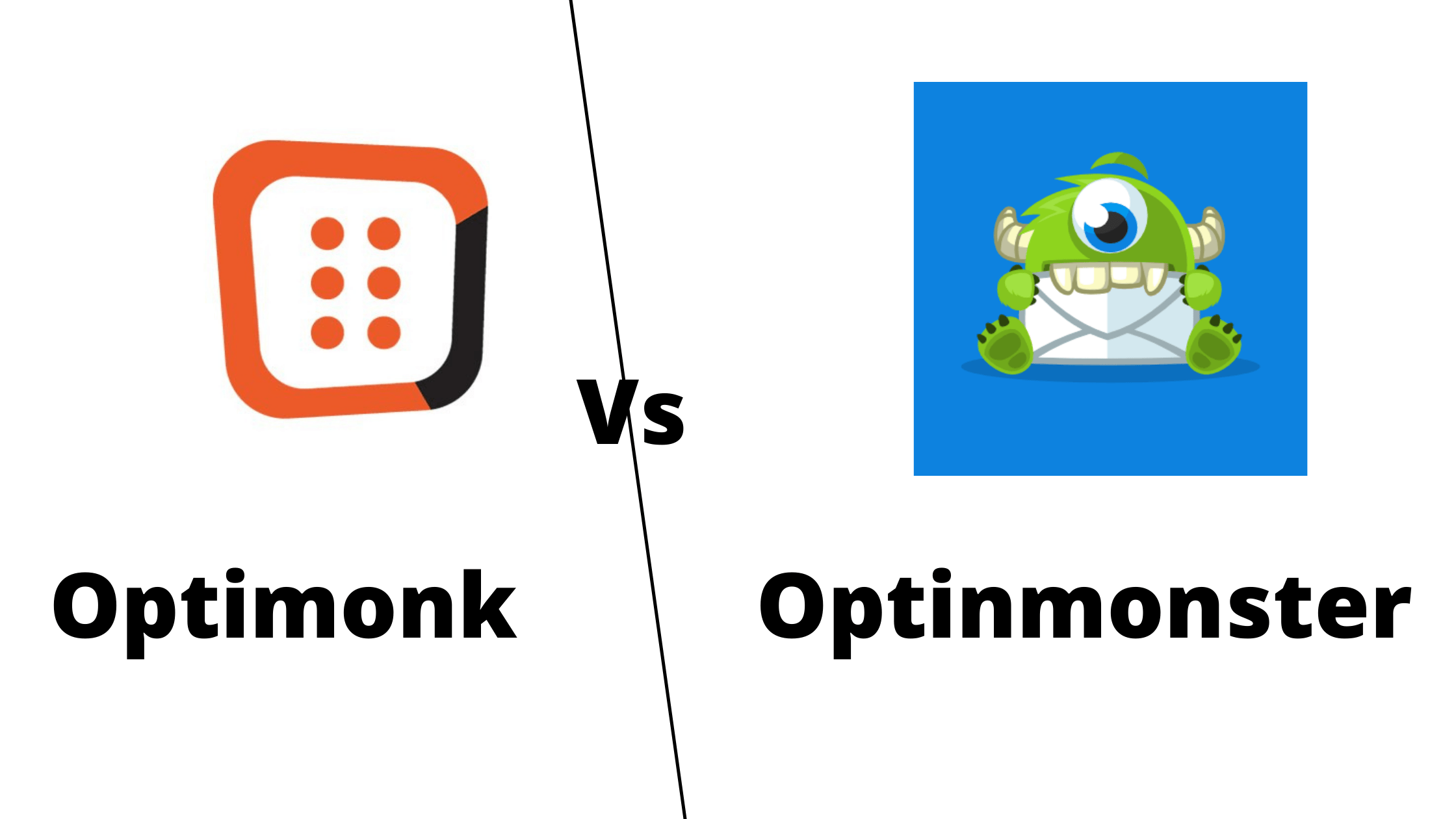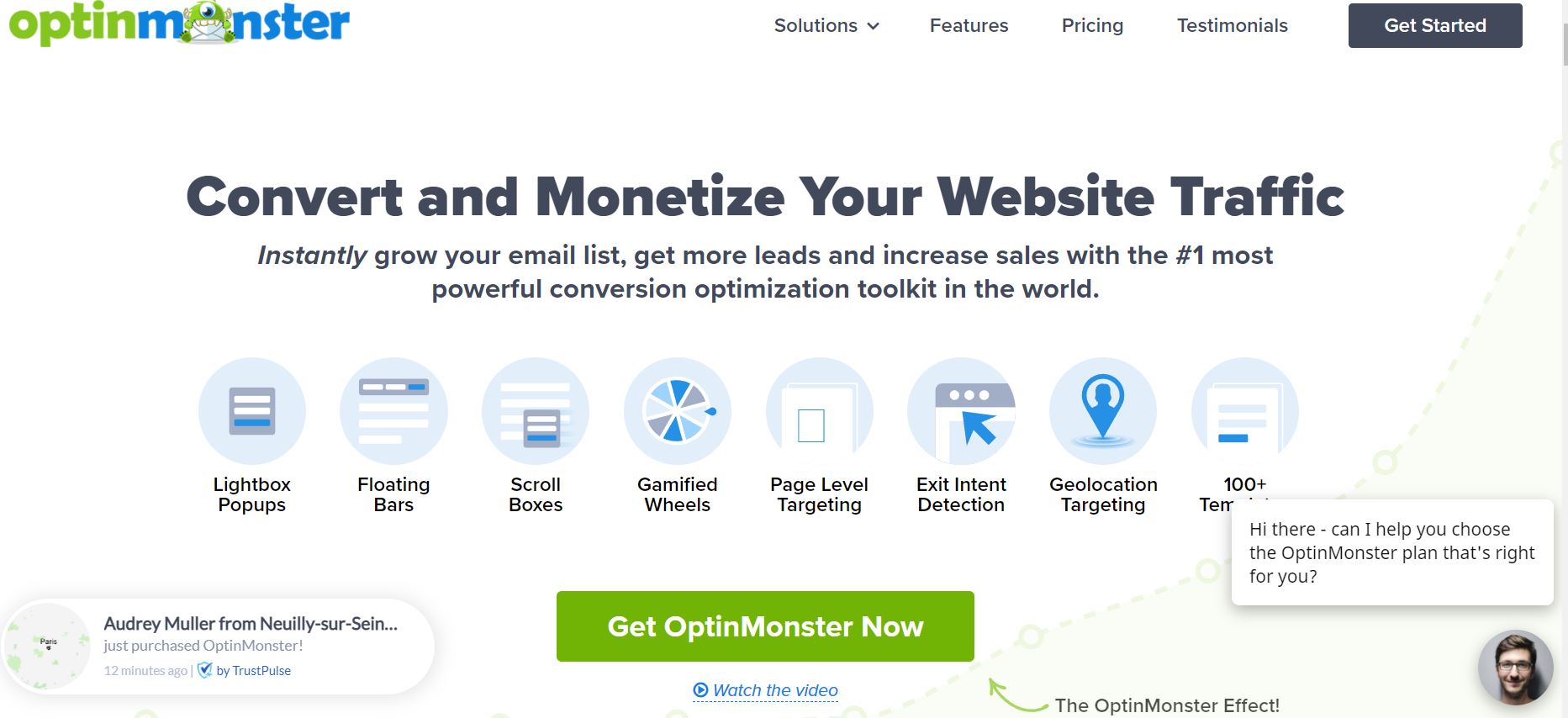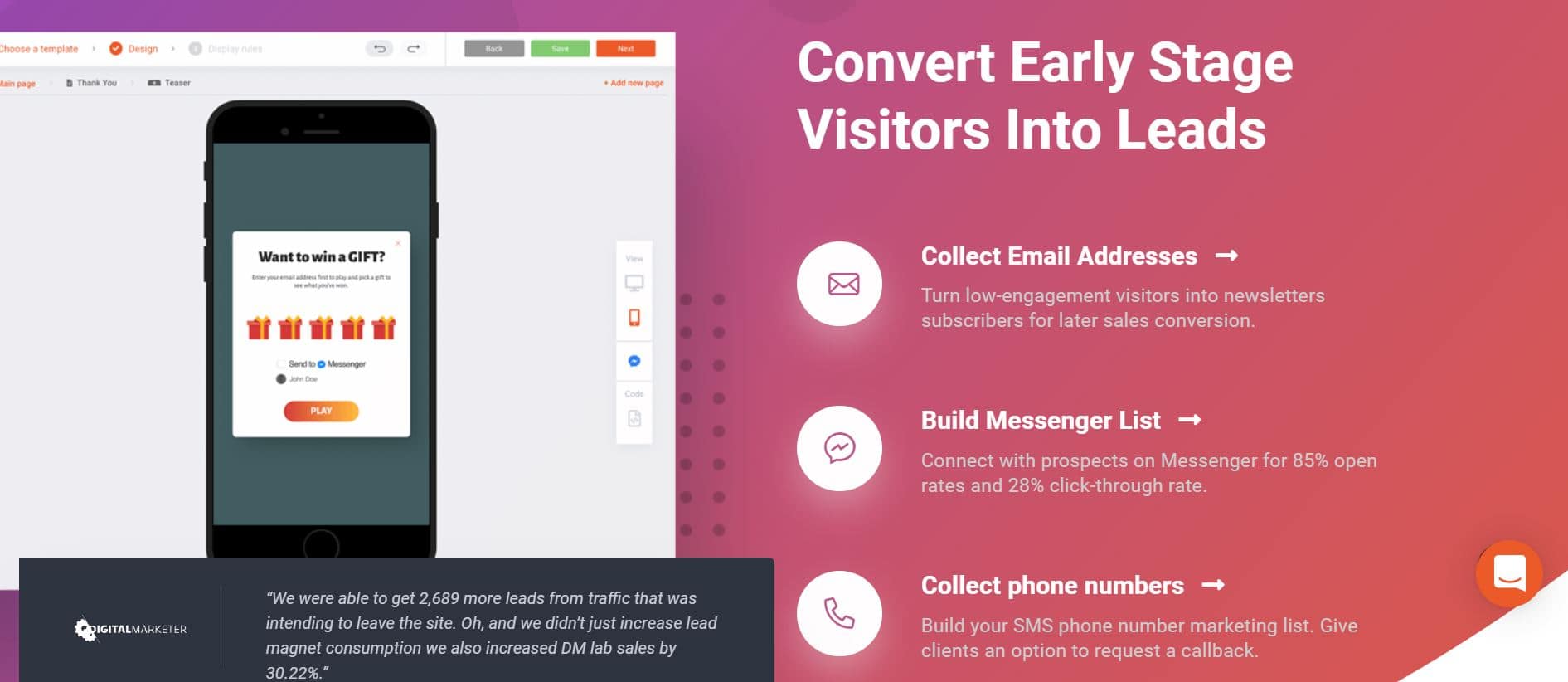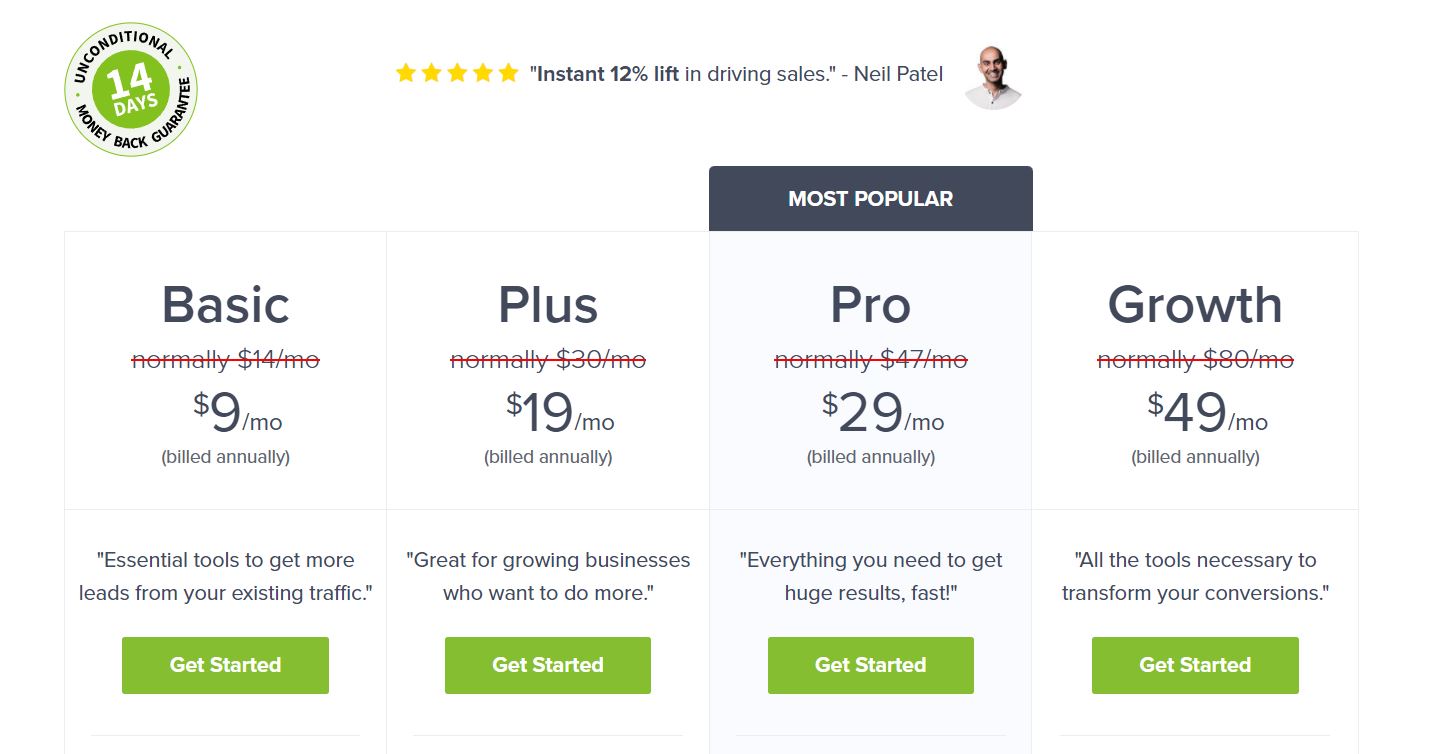OptiMonk and OptinMonster are two of the most popular eCommerce solutions for capturing visitors and converting them into customers. Read this blog to read an in-depth comparison of OptiMonk vs OptinMonster
Thousands of brands rely on them to generate revenue and grow their mailing lists.
But how do OptiMonk and OptinMonster fare in a match-up?
In this post, we’re going to compare them. Despite their similar-sounding names, they’re different in a few key areas.
Let’s start by looking at what both solutions provide.

OptimonkLearn More |

OptinmonsterLearn More |
|---|---|
| $ Pricing | $29 | $9 |
| Best for |
Optimonk helps ecommerce store owners to create personalized shopping experiences and win customers for life. #OptiMonk |
OptinMonster turns ordinary pages of a website into opportunities to grow your email list, reduce shopping cart abandonment & make more sales. |
| Features |
|
|
| Pros | |
|
|
| Cons | |
|
|
Here’s what I am going to cover in this blog:
- How do OptiMonk and OptinMonster work?
- How are OptiMonk and OptinMonster different?
- Guides and resources for improving campaigns
- Subscription prices
- Quick campaign setup
How do OptiMonk and OptinMonster work?
OptiMonk and OptinMonster both pride themselves on helping brands:
- Grow their email and SMS lists.
- Reduce cart abandonment.
- Increase sales by offering promotions and recommendations.
Both have easy-to-use editors for creating onsite messages like popups and sticky bars (called floating bars by OptinMonster).
Users add these messages to their websites to engage with visitors and guide them down the sales journey.
Let’s discuss in more detail the similar features the two platforms offer. And after that, we’ll talk about their differences.
Differences of OptiMonk vs Optinmonster
1. Sidemessages, slide-ins, and sidebars
OptiMonk and OptinMonster both have onsite messages that don’t interrupt visitors.
OptiMonk uses sidemessages
These are small messages that appear at the bottom corner of your webpage.
Sidemessages don’t demand your visitors’ attention. The message will appear but the visitor can ignore it even after it’s triggered. They can engage with it whenever they’re ready.
This makes side messages different from popups. While popups require visitors to take an action (either convert or exit the popup), a side message is more polite.
Sidemessages are ideal for:
- Offering discounts and promoting events.
- Advertising updates or store policies (such as shipping and returns).
- Collecting feedback from visitors.
- Recommending products to customers.
The standard side message is a small box, as seen in the picture above.
But with OptiMonk, you can change the width and height if you need to make it larger.
You can even make your side message the same height as your browser.
OptinMonster uses Slide-in messages
OptinMonster’s slide-in messages are basically the same as OptiMonk’s side messages––just with a different name.
But OptinMonster offers another type of non-intrusive popup known as sidebars.
These are the bigger version of slide-in messages––they’re similar to OptiMonk’s full-height side messages.
2. Sticky bars and floating bars
Sticky bars and floating bars serve the same purpose. They hang across the top of the page and stay there during site navigation.
This is a great way to promote events and deliver coupon codes without disrupting your visitors.
OptiMonk calls this feature a sticky bar.
And OptinMonster calls it a floating bar.
3. Popups
OptiMonk and OptinMonster are popup tools. Naturally, they both offer popups for converting visitors into customers.
OptinMonster sometimes refers to their popups as “lightboxes” or “lightbox popups.”
A key feature is how easy it is to design these popups. Both platforms offer a drag-and-drop editor so you can capture leads without writing a lick of code.
Here’s OptiMonk’s editor:
And here is OptinMonster’s:
Both tools have advanced campaign settings like:
- Exit intent for messaging visitors just before they leave the website.
- Campaign scheduling
- Location-based targeting.
- Targeting visitors who’ve already interacted with an existing popup campaign.
- Targeting desktop or mobile users.
What’s more, OptiMonk and OptinMonster also offer similar features for driving conversions, such as:
- Product recommendations.
- Countdown timers.
- Popups for collecting feedback
- Gamified popups.
Here’s a popup made with OptiMonk:
And here is a popup made with OptinMonster:
As you can see, both solutions let you create stunning popups.
Now that we’ve looked at how OptiMonk and OptinMonster are similar, let’s talk about their differences.
Guides and resources for improving campaigns
Learning how to use new business tools can be tough––especially when you’re busy running a company. Quick and easy product tutorials can be a lifesaver when you’re building campaigns.
And both platforms make it easy for customers to learn how to create effective onsite messages.
OptinMonster offers OptinMonster University
It’s a series of training videos and ebooks that walk customers through the types of campaigns they can set up and how they can improve conversions. This feature is available to all users who buy an OptinMonster subscription.
OptinMonster also has a comprehensive instruction manual that users can refer to anytime they need help with something.
This database covers everything you need to know about how to use OptinMonster. You can learn how to do simple tasks like setting up your first campaign or more advanced topics like integrating with other marketing tools.
It’s free for the public to browse, but OptinMonster doesn’t offer free plans so it’s only relevant for paying customers.
OptiMonk has several resources to help users maximize their campaigns
Best of all, most of their materials are completely free for everyone to use!
OptiMonk provides informative live webinars with experts that walk users through the process of creating and personalizing their onsite messages.
OptiMonk also has an extensive library of ebooks for improving your sales and marketing campaigns.
They even offer a free ebook on how to improve sales through CVO.
OptiMonk’s Knowledge Database gives step-by-step instructions for setting up campaigns, integrating with popular eCommerce tools, and customizing templates.
Also, OptiMonk has a team of Customer Success and CVO experts who will meet with you if you need personalized help setting up campaigns or problem-solving.
This is great for when you want to ask specific questions about your campaigns.
Now, what about the cost for each platform?
Quick campaign setup
Both OptiMonk and OptinMonster offer templates for onsite messages such as:
- Cart abandonment popups.
- Stickybar announcements.
- Timed discounts, and more.
Templates are great because they dramatically reduce the time it takes to create and launch a popup campaign.
All you have to do is add your company name or change the wording to reflect your products.
Here is an example of OptinMonster’s template library. You can choose which theme and type of message you want to use, like a popup or floating bar.
While OptinMonster’s template library is helpful, it doesn’t compete with OptiMonk’s Inspiration Library.
What makes OptiMonk’s Inspiration Library so great?
They offer more than 370 templates (and counting).
You can browse templates by their:
- Theme.
- Campaign goal (e.g., stop cart abandonment, grow mailing list).
- Type of onsite message (popup, sticky bar, sidemessage, etc.).
OptiMonk has more than 20 types of themes, including themed popups for all major holidays. If you’re searching for a solution that removes the time and effort it takes to create beautifully designed campaigns, OptiMonk is the clear winner.
Their broader range of templates means you can find beautiful popups, sidemessages, or sticky bars for any occasion!
Quick Links
- Getsitecontrol Review
- Which Is The Top Best WordPress Popup Plugin?
- OptiMonk Review
- Best OptinMonster Alternatives
What’s the verdict?- OptiMonk vs OptinMonster 2024
OptiMonk and OptinMonster are both effective popup tools. But if you had to choose between the two, which solution is right for you?
Both products work with eCommerce platforms and custom websites, but OptinMonster does offer other WordPress plugins. This can be helpful for customers who want to stick with the same vendor.
If you need an e-commerce solution that’s both powerful and easy-to-use, OptiMonk is the winner.
Why? Because of their CVO approach.
OptiMonk helps customers double their conversions when compared to other popup tools.
OptiMonk works seamlessly with:
- Popular eCommerce and marketing tools.
- All types of other websites and eCommerce platforms.
Also, OptiMonk users have access to endless resources for enhancing their campaigns. Between the expansive template library, ebooks, and helpful staff, you’ll always have help improving conversions and increasing customer lifetime revenue.
This should supply you with the facts to decide which company would best serve your business needs. We hope that this comparison was helpful and we wish you increased sales and happy customers!










